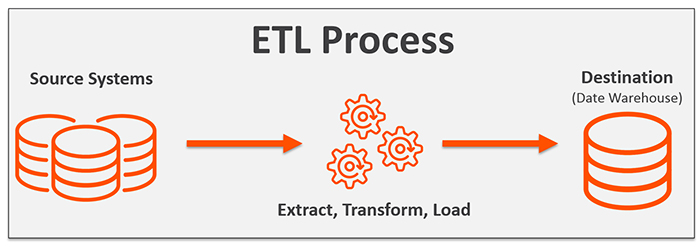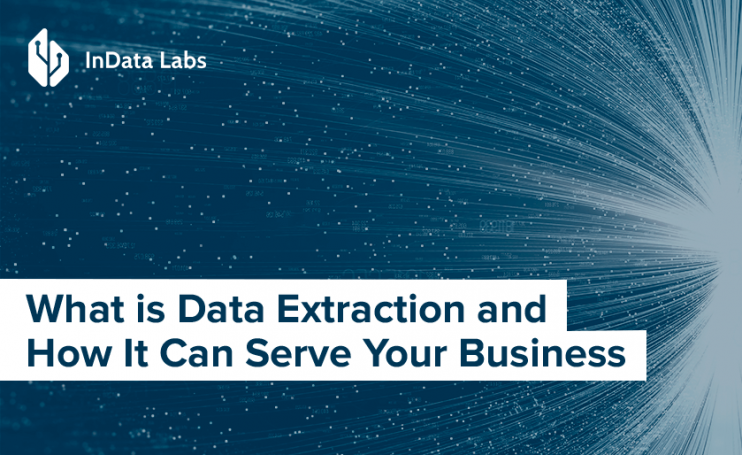In the highly competitive business world of today, data reign supreme. Customer personal data, comprehensive operating statistics, sales figures, or inter-company information may play a core role in strategic decision making.
It’s vital to keep an eye on the quantity and quality of data that can be captured and extracted from different web sources. By doing so, your company can attract new customers and retain loyal ones and also save time and resources on gaining knowledge on customer needs.
Data collection and data extraction are quite critical so far. The quality of these processes can impact the business strategy of your company. Quickly and accurately gathered data allows automating mundane tasks, eliminating simple errors, and making it less difficult to locate documents and manage extracted information.
The quantity of information is growing in leaps and bounds daily. So, taking into account the rapid technological progress, data extraction tasks should be entrusted to machine learning-based systems and solutions led by artificial intelligence.
How to Implement Data Extraction in Your Workflow
The meaning of online data extraction or web scraping is in collecting a considerable amount of data from a large array of resources in a swift and reliable manner. The aim of data extraction services is to analyze a client’s company data, learn the needs and requirements, and then shape the process of data extraction in line with business specifics.
Data at multiple levels can come in different forms, be it financial insights, business analytics, market research data, prospect databases, or data from customer profiles. So, web scraping allows businesses to leverage data to obtain better perspectives for growth.
The major stage of the process is called ETL, that stands for Extract, Transform, Load. This paradigm allows pulling together data from multiple sources into a single database.
Let’s take a logistics provider who wants to extract valuable data from digital or electronic invoices, client’s history of service uses, information on competitors, and so on. The sources of data may include emails, diverse profile forms, corporate sites, and blogs. ETL allows extracting relevant data from different systems, shaping data into one format and sending it into the data warehouse.
According to the definition, the ETL process for data extraction consists of 3 parts:
Extract. At this phase, engineers extract data from a variety of sources – web pages, clients’ historical data, details of routes, and many more. It is the process of “reading” data from one database to collect data and pull it together.
Transform. This phase plays a critical role, as it precedes data integration. The collected data is converted into a form that is needed to combine data and store in another database. This way, currency amounts or units of measurement can be converted.
Load. It is the phase when the data can be placed into the target database or data warehouse.

Source: bmc.com
The data extraction procedure is aimed at reaching source systems and collecting data needed for the data storage place. If your business is in need of web scraping services, you are welcome to contact professional data extraction services provider to learn more about the specifics of the process depending on your business goals. The web scraping process is fast and immediately generates the output to be used for completing your data-related tasks.
Taking into account your company’s needs and processes, you can employ some open-source web data extraction tools or opt for custom data extraction services and solutions that allow you to get the most accurate and quick results.
AI and Machine Learning Tools for Web Scraping
Tech giants harness algorithms to boost customer experience, accelerate data collection processes, and jump at the opportunity to save time and costs. Small- and mid-size firms have to strive to adopt a cutting-edge approach to strengthen their positions against competitors.
Traditional OCR engines fail to give satisfying data extraction results, as they don’t know what they are scanning. Thus, extracted data may need time-consuming reviewing to clean out a substantial amount of error. Machine learning (ML) algorithms allow computers to understand data and improve the accuracy of extraction throughout the process.
ML algorithms learn on existing business data and take into account the context that enables categorization of data. AI-based solutions help fine-tune the web scraping results through automation and full or partial elimination of manual work.
Different open-source AI data extraction tools are available on the market today. They can be employed to extract various types of data from web, desktop, mobile, server, or IoT apps. Raw data can come in any custom format, but it will be extracted and transformed into a common format by an advanced algorithm.
Whatever ready-made tool you choose to achieve your business goals, it entails certain benefits and conceals pitfalls. If you focus on maximizing the impact of investments in AI for your business, a custom-built system may be the best fit. It can help you meet all the needs for efficient processing of raw static images, videos, emails, feedback, and social media to categorize and store extracted data in a target database.
Ups and Downs of AI Data Extraction
Nonetheless, implementing AI for data extraction is not a silver bullet for optimizing workflows and maximizing efficiency. It is always better to scrutinize all strengths and weaknesses to be fully aware of solution capabilities and be ready for improvements.
AI solutions for web scraping can bring the following perks to your company:
- There is no need to waste many hours collecting data from various web resources. A time-saving approach is what ML algorithms enable. You can focus on more important and complicated tasks.
- Advanced tools are at your service to customize the information you extract and convert into a common format to place in your data storage.
- Assembled data may play a key role in aiding you in making decisions, launching ad campaigns, and reshaping your business strategy.
- You can easily find out comprehensive information on the latest trends and market tendencies relevant to your business niche.
However, there are several points that may require your close attention:
- Data retrieved from a variety of sources can be structured, unstructured, or semi-structured. It can be challenging to combine all the data, bring it in one format suitable for integration.
- Dealing with customer data, you have to handle sensitive information. In this context, the issue of security is of vital importance.
- Free and open-source data extraction tools can fall short of your business goals. It can be a good idea to contemplate the option of a custom data extraction solution.
Conclusion
It can be challenging to extract some relevant data and make it ready for further uses. There are a lot of aspects you need to take into account when choosing a solution for data extraction or web scraping. The usage of some ready-made solutions requires programming skills. At the same time, a custom-made data extraction system may come as the best means of achieving your company’s goals.
The merge of ML and AI allows building state-of-the-art intelligent tools meant for automation and simplification of various mundane processes. By implementing a custom AI data extraction solution in your workflow, you can ensure time- and resource-saving approach to handling data critical for business decisions and strategic planning. Share on X
Optimize Your Business Processes with the Help of Our Data Extraction Services
Have a project in mind but need some help implementing it? Drop us a line at info@indatalabs.com, we’d love to discuss how we can work with you.


